The other day I talked about the "Indian wood oats" (Chasmanthium latifolium) that I didn't remove the seed heads from, and so will be paying for it later with more work removing seedlings. Today I remove many of the seedlings that I already have.
My original plant was in this bed and has reseeded for years, but I finally removed it last year because of the seedlings. It's not that I don't want it reseeding, it's just that I don't want it reseeding here.
So although there's no longer a source of new seeds, there are still seeds in the ground that germinated last summer or are waiting to germinate. I'm hoping there aren't any that haven't sprouted yet, but I'm expecting the worst.
I can show you dozens of images of these little guys, but you get the idea -- they're all over.
It's not that I don't like this plant either, because I really do. I just want it in an area where it won't take over. So I pulled up as many of these as I could find. Many of them I got rid of, but I gave my neighbor a bundle of 20 or so of them, and potted a few up for myself:
Not sure exactly what I'll do with them, but I always like to have some extra plants on hand in case of emergencies, or to give away.
Some of these seedlings were growing in cracks in the patio, making them very difficult or impossible to pull or dig:
I don't want to use chemicals, So I turned to a different tool:
That's right, fire. Flame weeding is an effective and chemical-free way of removing unwanted plants, and it's ideal for this situation.
Normally I'd just have to quickly pass over the plant with the flame, destroying the leaves and stems, but since these are grasses and can usually survive some heat (think "prairie fire"), I have to focus the heat on the crown of the plant, hoping to kill the whole thing:
I really cooked this one and will see in a week or two if I was successful.
While I was working in this area, I decided to do one more little task: remove the Agastache foeniculum from this raised bed:
They're thriving here and look fantastic at first, but they end up getting about 3' tall, which is too high for this small raised bed that will eventually be covered in vines -- there is a trellis above. I need something that stays smaller here and can take more shade (from the vines), so these guys have to go. They're easy to dig though.
Some are stronger than others:
but they should all survive and will thrive wherever I eventually plant them. I dig up a few of these every year and pot them up, but this is the first year I did it early enough -- I usually wait until the plants are bigger and cause them more distress than is necessary.
I think I have about 20 of these potted up now, which is way more than I can use. Like with the wood oats seedlings, these are good to have around "just in case", and many will be given away. Bees really like these flowers, so I'll use them to help attract pollinators to the veggie beds.
Although that little bed is now ready for something new (as yet unknown) and the area around the bed has many fewer wood oats seedlings in it than before, I still have many more wood oats seedlings to discover and pull.
That will have to wait for another day though, because I'm tired of digging them, and when I'm tired of weeding I stop. No point in making it a chore, right?
.

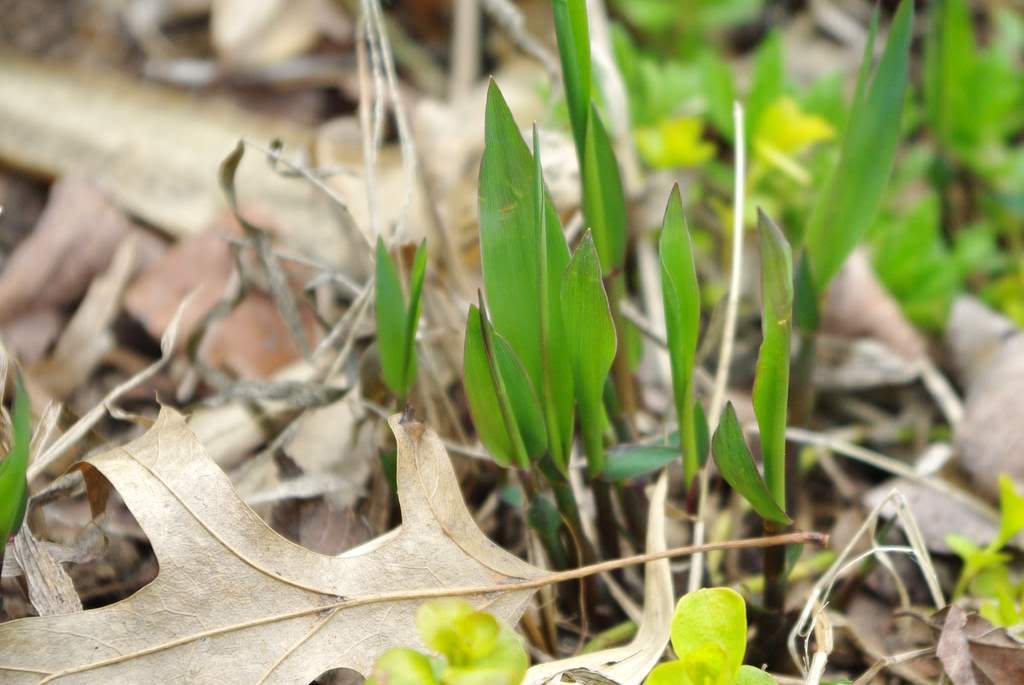
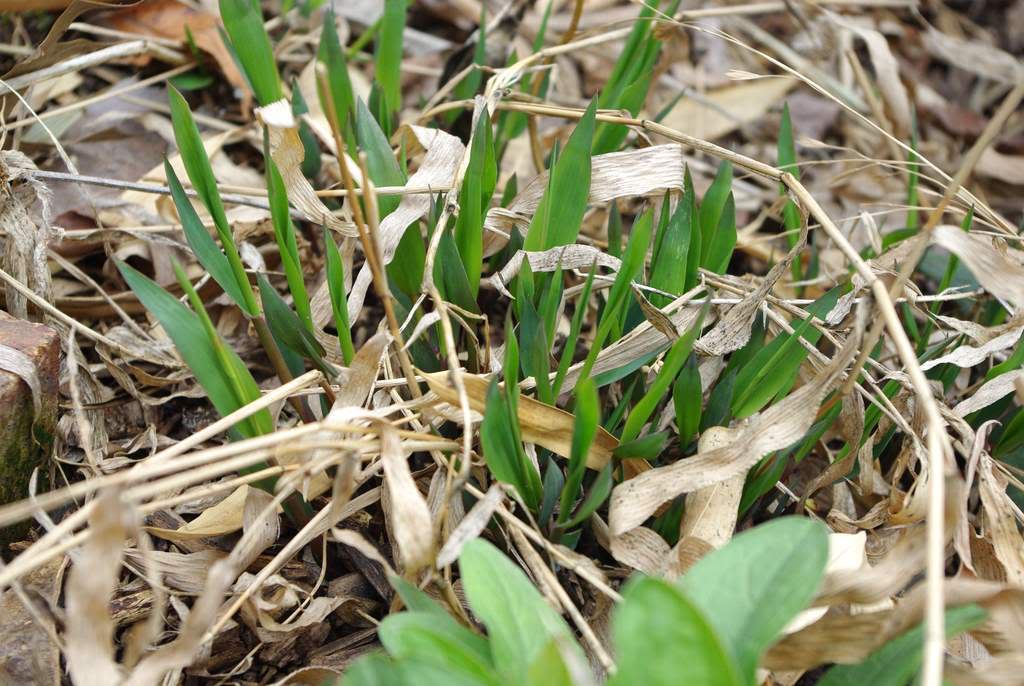
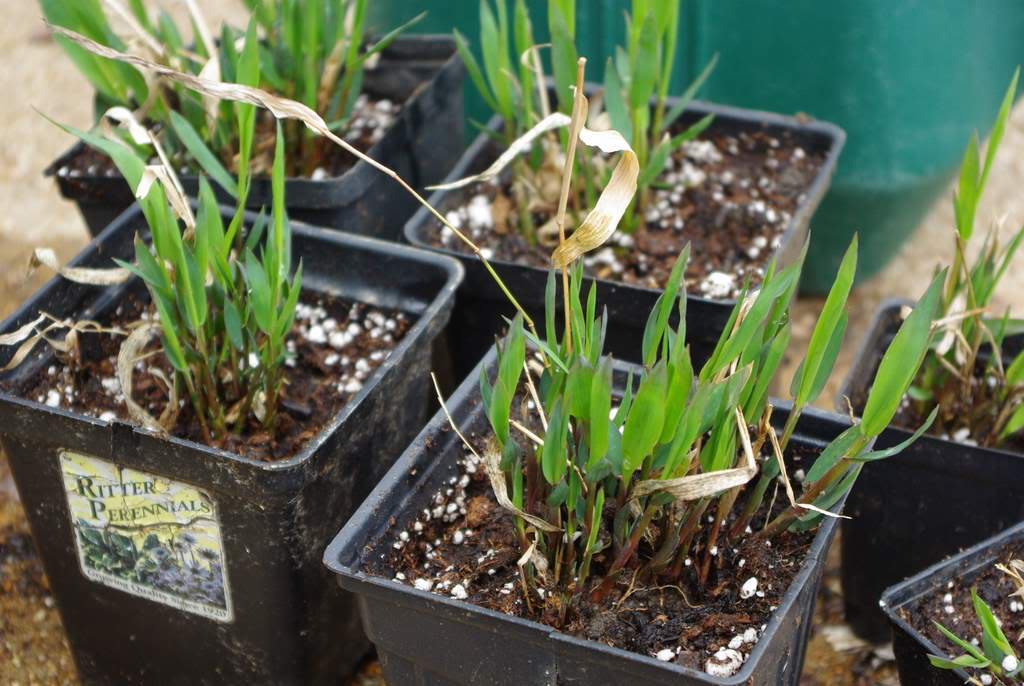
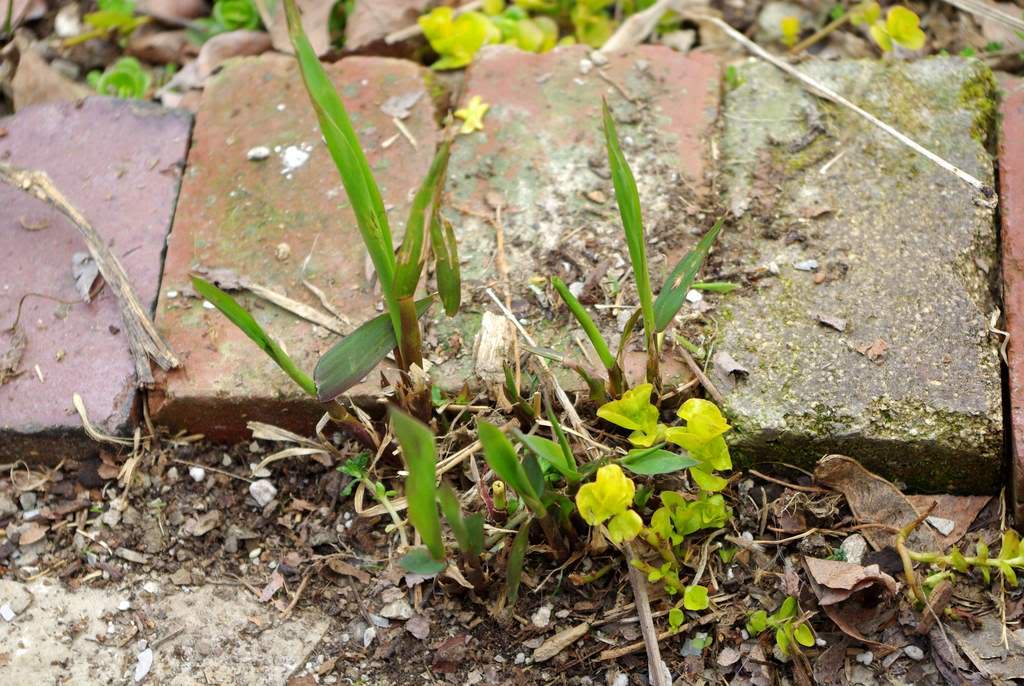
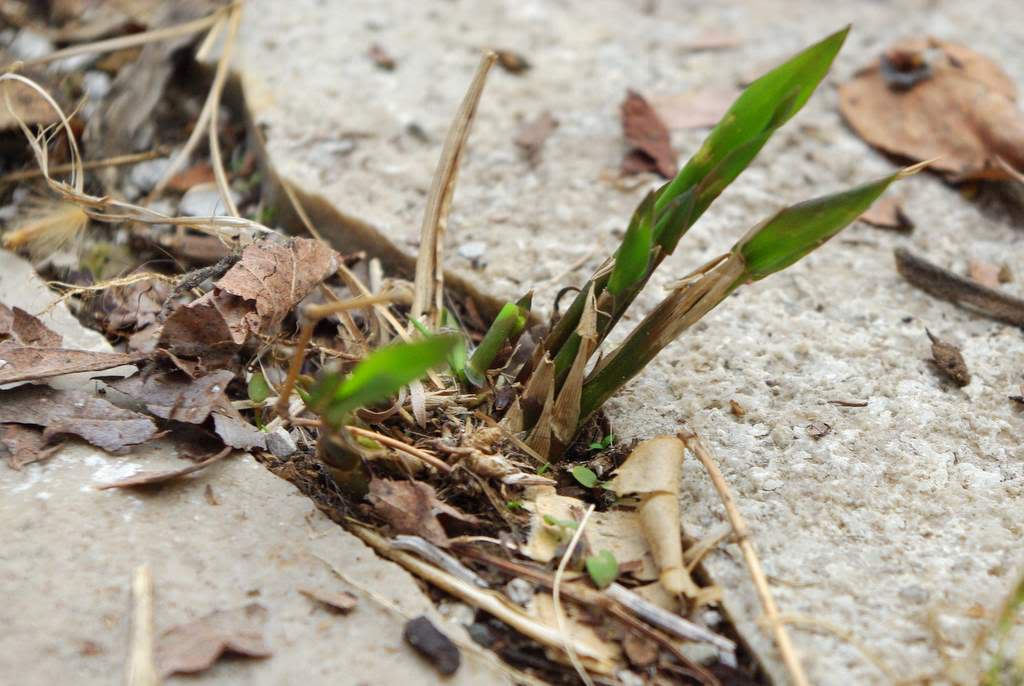
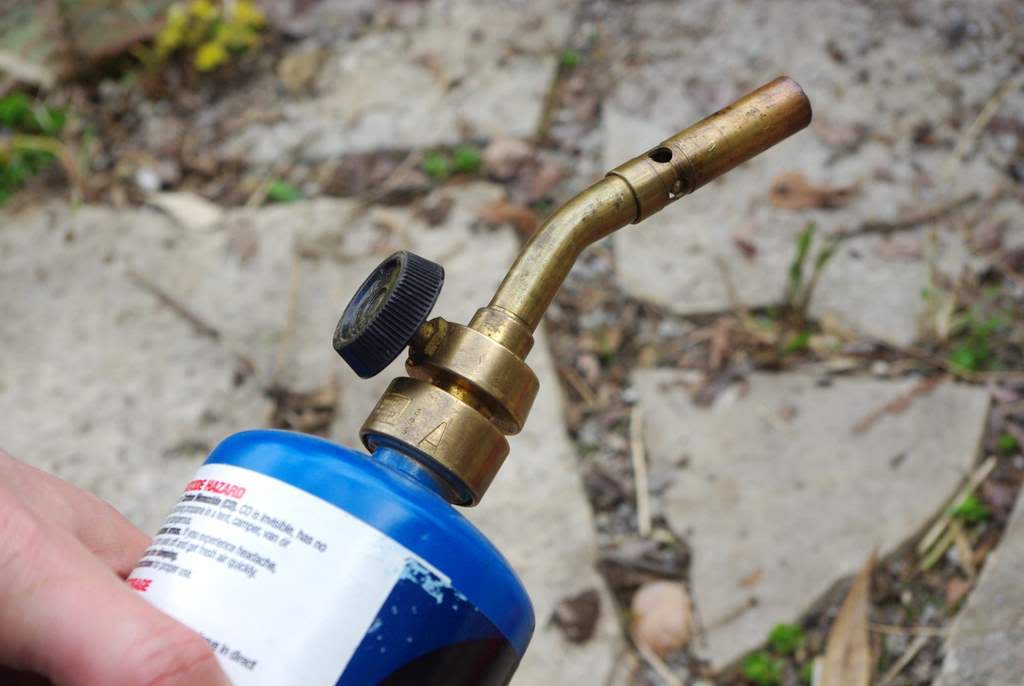
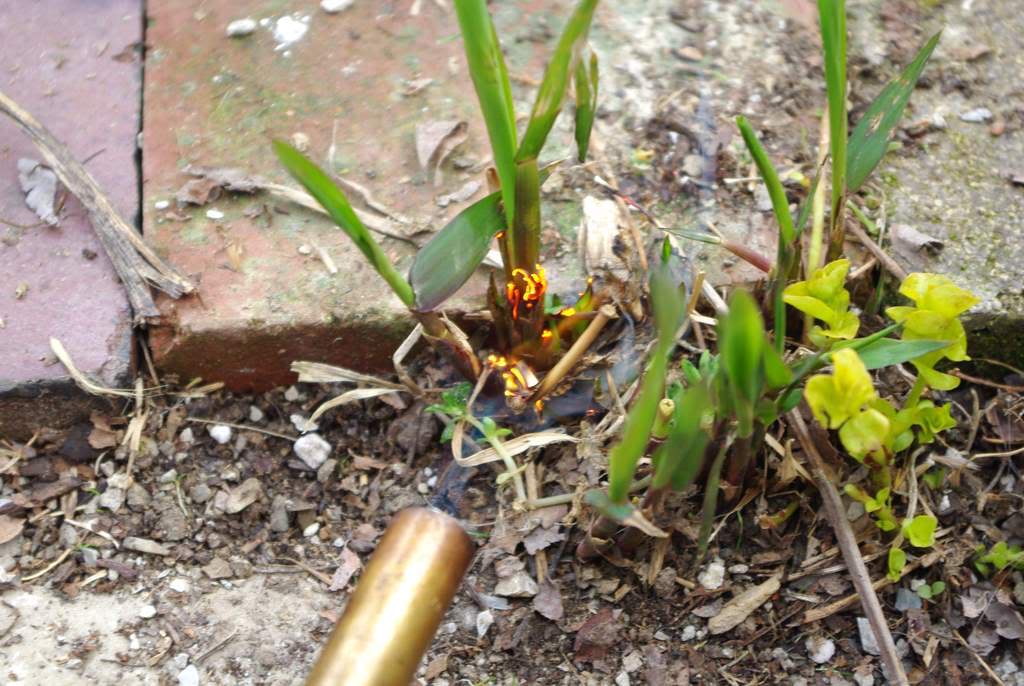
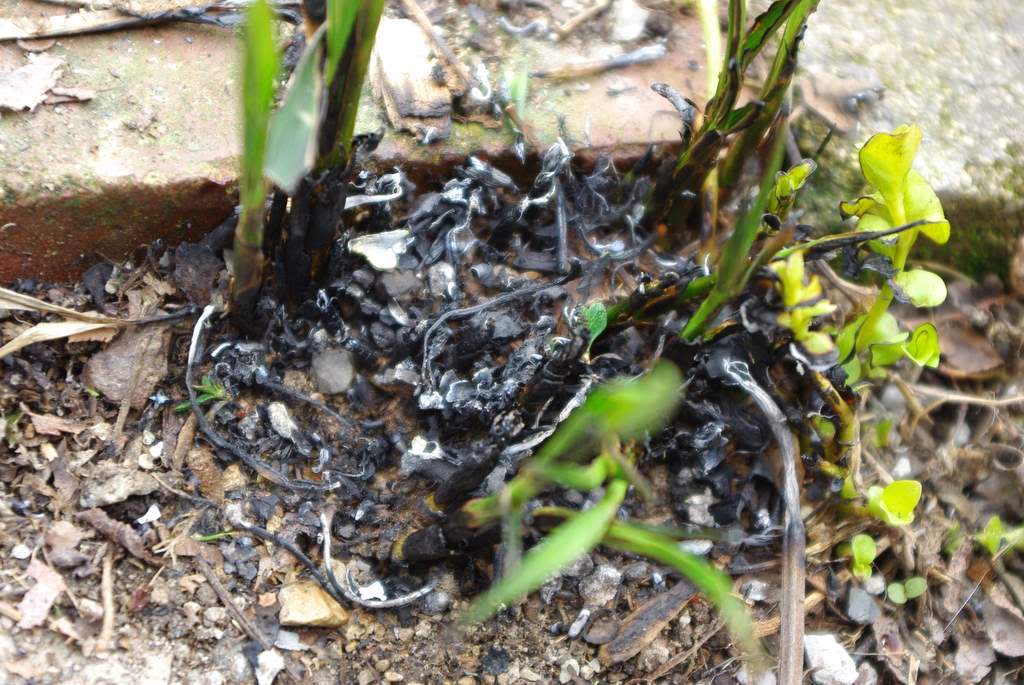
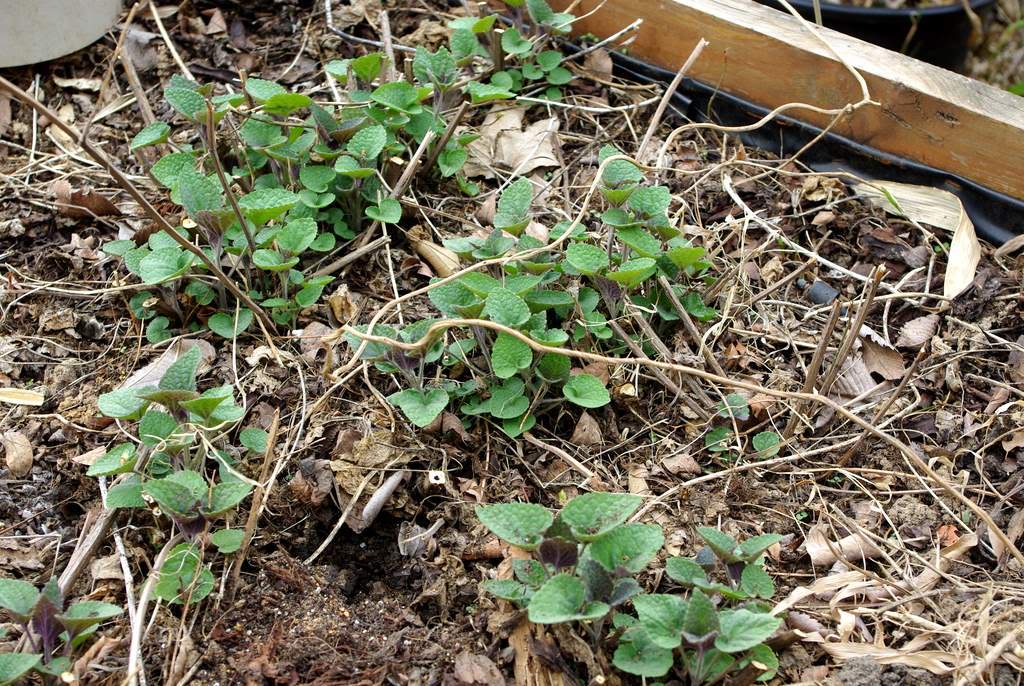
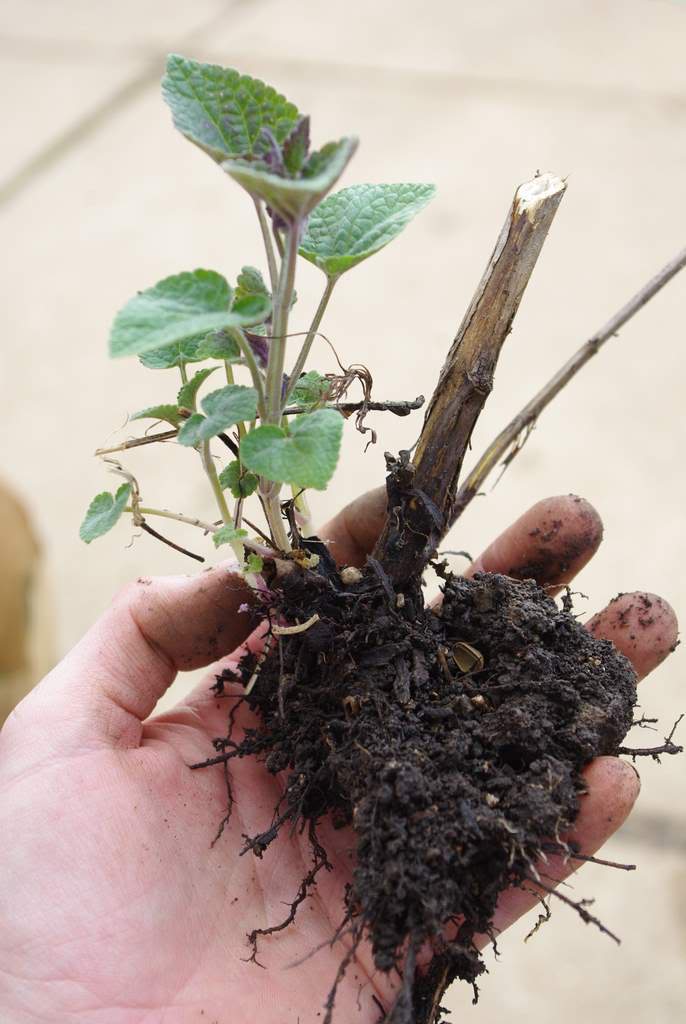
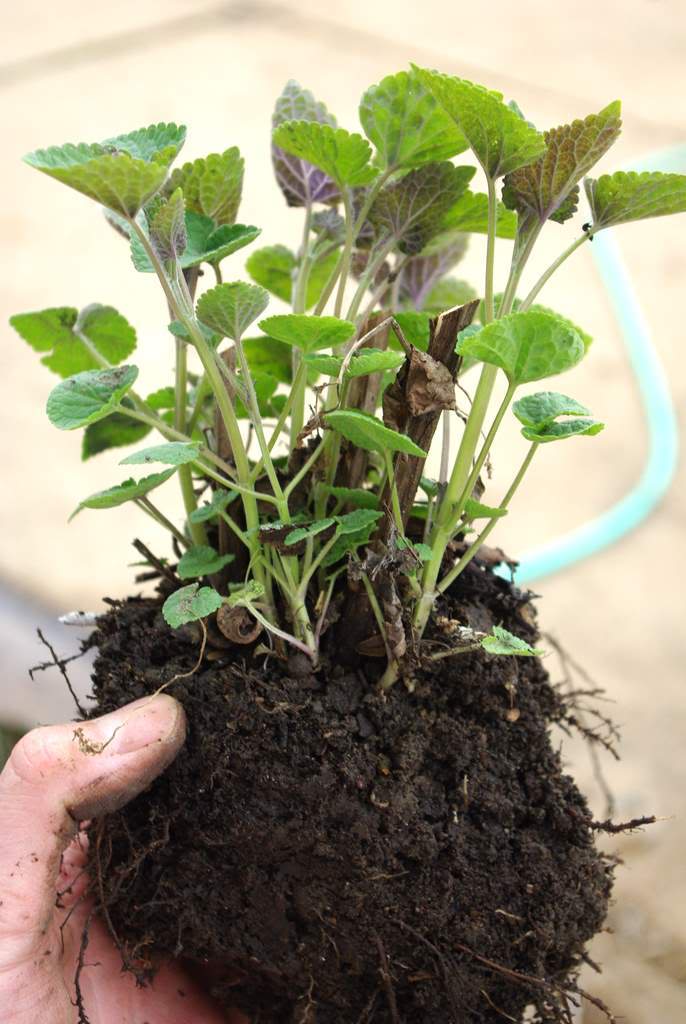
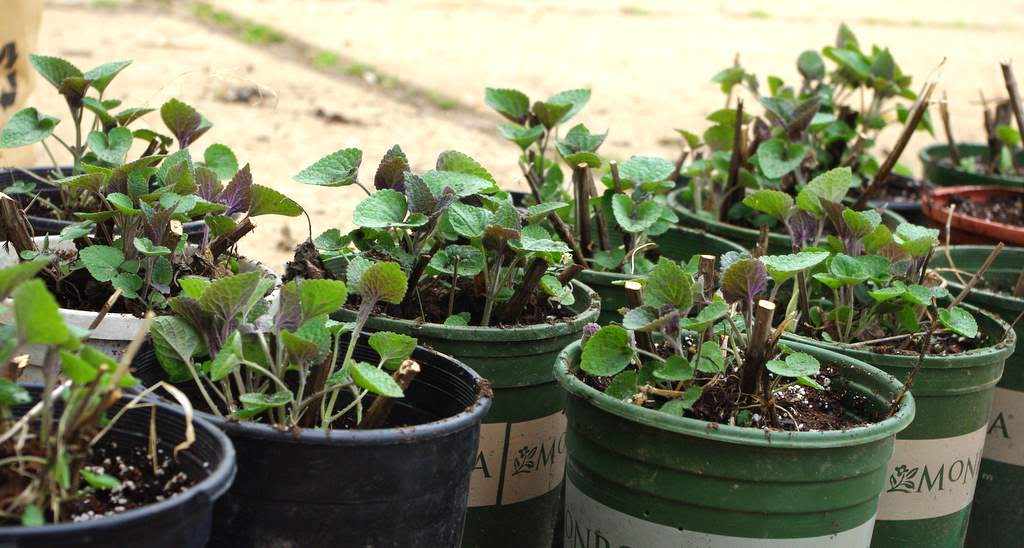

You will turn it into a full-time job, looking after the 'spares'. Would boiling water reach down to the roots between paving stones?
ReplyDeleteLucy
Lucy, I've been wondering about boiling water too. I've never tried it.
ReplyDeleteAlan, great blowtorch! Beats the kitchen blow torch I used on some oxalis a while ago.
By the way, if you can't get rid of your Agastache foeniculum, I'll take one :-)
Gerhard
:: Bamboo and More ::
Boiling water works well for brick walks but doesn't seem to root kill everything :(
ReplyDeleteJohn
For getting in between cracks, I use a cordless drill. You drill out the core and the tap root, and it gets even deeper than fire. 8/10 times they don't come back again.
ReplyDeleteThis was an interesting post because I share your problem with what we call Inland sea oats.I just pull 'em out. It seems quite easy to do. But I would love to have passalongs of your Agastache- too bad you live so far away. I have used boiling water to kill weeds. I have 2 cast of electric kettles in my potting shed and use them for fire ants and weeds. It is successful with tender weeds but I doubt the tough roots of sea oats would succumb. However, I love the idea of the drill. I have a lantana growing in my sunken garden and I cannot kill the things. Also a miscanthus which is going to get that treatment today.
ReplyDelete